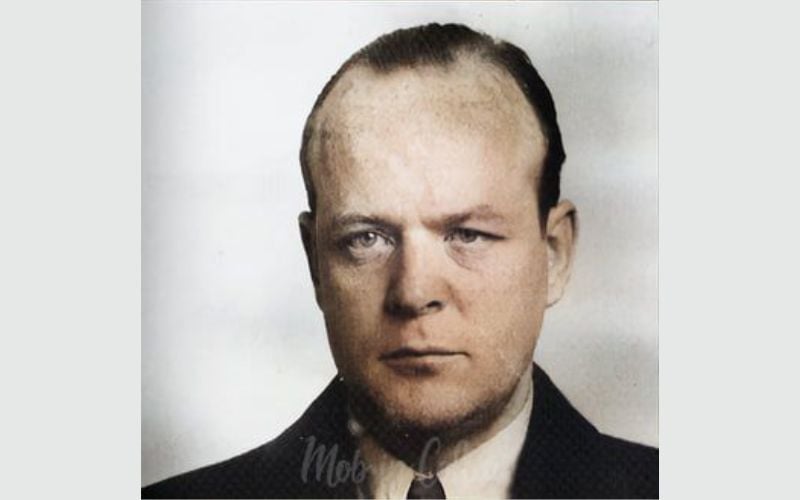| Then Taoiseach Charles Haughey with Bertie Ahern in 1992 |
They used to call Bertie Ahern the Teflon Taoiseach. You could throw plenty of mud at him but it none of it would ever stick.
Well, that's all changed now after the publication last week of the tribunal of inquiry into corruption in planning here.
The Mahon Tribunal -- named after the judge who was chairing it -- found that former Taoiseach (Prime Minister) Ahern had repeatedly lied about the source of £215,000 Irish pounds in cash that passed through his bank accounts in the 1990s. The tribunal report said that it did not believe Ahern's statements that the money was a series of loans or presents from friends.
The tribunal rejected Ahern's various explanations regarding his personal finances during the period when he was minister for finance, including his claims that his friends had arranged the "dig-outs" because he was in financial difficulty after his marriage breakdown and separation.
Despite finding that Ahern's explanations about the source of the various cash lodgments into his bank accounts were "untrue,” the tribunal stopped short of describing him as corrupt. This allowed Ahern to claim over the weekend that the tribunal had not found that he had received any "corrupt payments." But this is something of a technicality.
To prove corrupt payments here you must be able to prove not only that the politician was given money, but that he did something in return for it. In the case of Ahern, the tribunal was able to find a series of unexplained payments, but the source of them and whether anything was ever done in return for them remains a mystery.
The true source of the funds, and whether or not they had been corrupt payments, could not be determined because Ahern had not told the truth about his finances, the tribunal said.
And that's about it. After sitting for 15 years at a total cost -- once all the legal bills are in -- of an estimated € 300 million, the tribunal has told us more or less what we already knew -- Bertie Ahern was on the take.
It was small scale stuff, £30,000 here and £20,000 there. After a forensic trawl through his bank accounts over 20 years or more the total amount of possibly dodgy money that the tribunal was able to uncover added up to a maximum of £215,000 (it's so long ago we still had the Irish pound at the time).
Think about it. The Irish taxpayer has to pay out around € 300 million to find out that Ahern got the equivalent of around € 250,000 in payments that cannot be explained.
To the simple question, "Was it worth it?" the answer must be no. Not only has it taken an incredible 15 years and caused a lot of time wasting and disruption, the tribunal has failed to uncover the kind of major corruption that might have justified its existence for so long and at such expense.
The only people who are happy, as usual, are the lawyers. The tribunal has made the leading lawyers
involved multi-millionaires, with the top people getting between € 3 and € 5 million each. It fact the tribunal created a total of 17 lawyer millionaires during its time.
It was not Bertie Ahern who was exposed in the report, of course. A long litany of petty corruption involving senior and junior figures in Fianna Fail was uncovered going back over the years.
It was widespread through the system here in a way usually associated only with banana republics in South America or Africa or in a European country like Greece where bribes and kickbacks are normal.
We used to think that Ireland was better than this. Now we know officially that we are as bad as the rest of them.
Part of this had to do with Fianna Fail being in power for so long. As the saying goes, power corrupts, absolute power corrupts absolutely. Fianna Fail had close to absolute power for so long that it was almost inevitable that corruption would creep in.
This was aggravated by the planning system here which allowed local politicians to overturn decisions taken by planners deciding on construction projects. The votes of local politicians could be bought for a thousand or two, ensuring the green light for developments that were often worth tens of millions.
Some local politicians from other parties were also involved. But it was mainly Fianna Fail. For bigger developments you needed to get bigger political names behind you, and so some senior Fianna Fail figures were part of what was going on.
The sad truth is that Ireland was not just corrupt, but corrupt at the heart of the political system. And Fianna Fail was at the center of it.
Maybe we should not be so surprised. After 800 years of occupation, we have only recently (about 90 years ago) emerged as a free country allowed to rule ourselves.
We may snigger at some African countries where the elite, once they get into power, use their position to enrich themselves. Now it seems we may not be all that different.
The Fianna Fail party has always regarded itself as having a special place in Irish life, often claiming to embody the nation. In its early years, particularly in de Valera's time, the party was almost puritanical in its approach.
Private wealth was seen as less important than the task of building the new nation and leading a simple and moral (i.e. Catholic) life. In de Valera's Ireland, the comely maidens lived happily in cottages on little farms and danced barefoot at the crossroads.
But it was never that simple. Even then, de Valera was accumulating wealth for himself as he used the donations of thousands of little people, mainly in America, to take control and effective personal ownership of the Irish Press Newspaper Group. So even Dev was not so pure.
But the rot really set in when Charlie Haughey was taoiseach in the 1980s. By then Fianna Fail was the party of the "mohair suit men" and had become the nexus of politics, business and construction.
To get things done, you went to certain people in the party with brown envelopes stuffed with cash. The culture of "fixers" was endemic in Fianna Fail, and the one learning at Haughey's feet was his political heir apparent and Finance Minister Bertie Ahern.
An earlier tribunal has shown that Haughey was on the take on a massive scale, with millions involved. Although he had no income other than his pay as a politician he lived the grand lifestyle of a wealthy squire, paid for by businessmen who wanted to "get things done."
Ahern was never on that scale. In comparison, what he was taking was pocket money. That is evident in the size of the small house he lives in and the fact that he has no sign of any accumulated wealth, no big cars, or yachts, or racehorses or country estates.
For what amounts to chicken feed, Ahern has now been disgraced and humiliated. Despite his achievements on peace in the North, few people here have any sympathy for him, largely because of the way he promoted the boom economy that has now collapsed and cost us our economic sovereignty.
Ironically, it was Ahern's first government that established this tribunal back in 1997. Officially called the Tribunal of Inquiry into Certain Planning Matters and Payments, it was known as the Flood Tribunal then, under its first chairman, a retired High Court judge. It was set up to investigate planning corruption in Dublin from the mid-1980s because of revelations that bribes were being paid to local politicians to rezone land for developers.
When Judge Flood retired, Judge Mahon took over. Finally, after 15 years, 917 sitting days and a likely total bill of € 300 million the tribunal has come to an end, with a report that is 3,270 pages long.
It reveals dodgy behavior by former Taoiseach Albert Reynolds and Minister Padraig Flynn, among others.
But it is mainly Ahern who has been left to carry the corruption can.
He only has himself to blame. His efforts to explain where he got the money were pathetic; at one point he even used the hoary old excuse that he won some of it on the horses!
An example is one lot of Ahern's money, which appeared to have an American connection. This was for a bank deposit of £28,772.90 on a particular day in 1994. The odd pennies at the end seemed to indicate that this must have been a round figure in foreign currency which had been converted into Irish money.
Ahern told the tribunal that it was 30,000 in British pounds (sterling) which he had been given by one of his friends from Manchester. But the trouble was that when the tribunal examined the bank records for the day in question, it found that the bank branch had taken in less than 2,000 sterling that day.
However, the bank's buy rate for U.S. dollars that day, if it was applied to a deposit of $45,000, would have produced exactly £28,772.90, the exact amount that had been deposited into Ahern's account.
Does someone over there know something we don't?




Comments